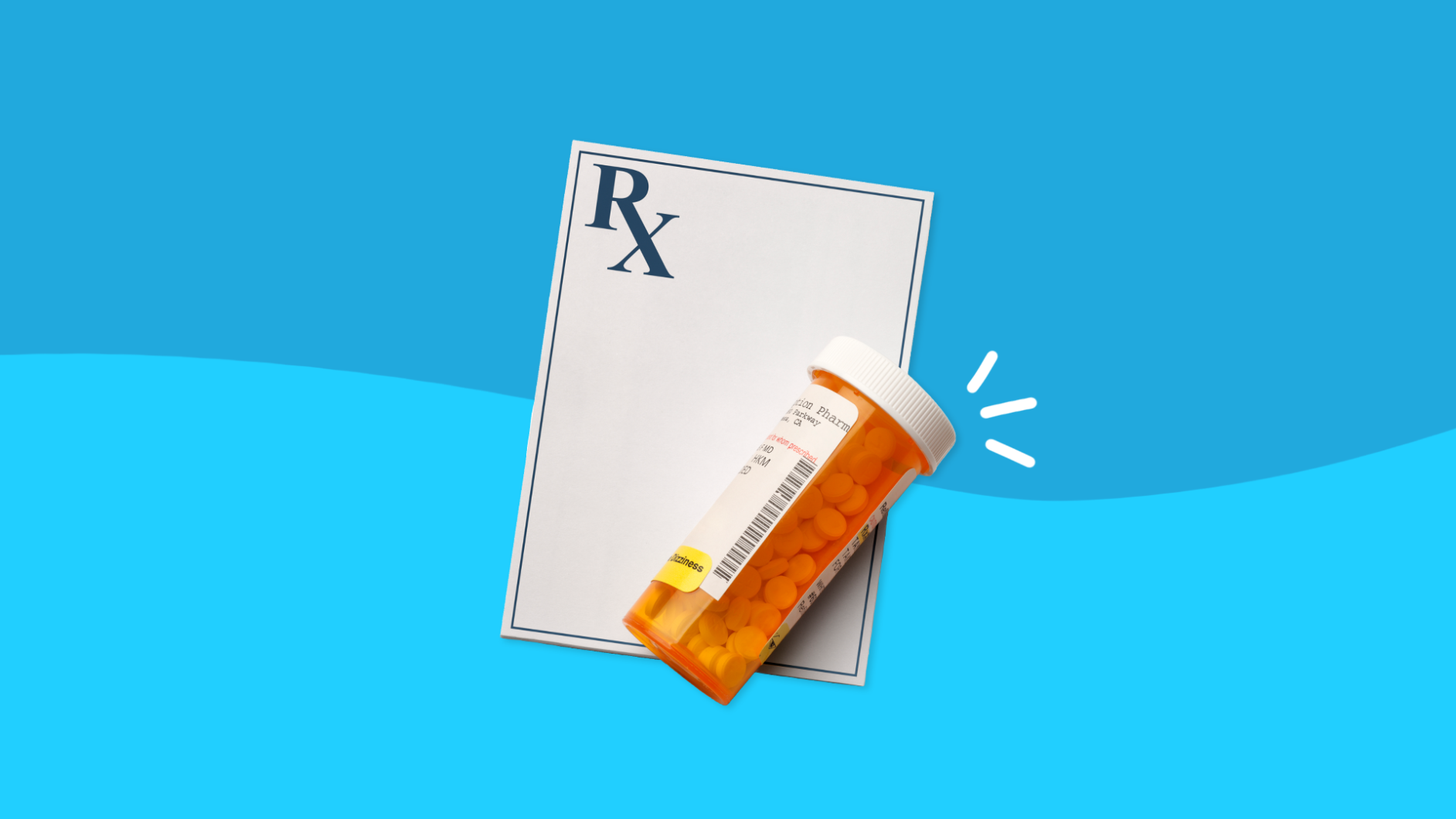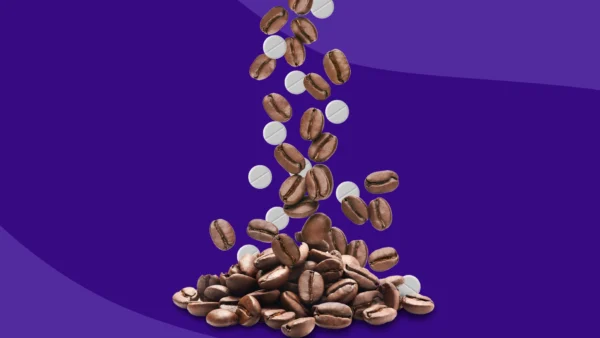Sumatriptan side effects | Serious side effects | How long do side effects last? | Warnings | Interactions | How to avoid side effects
Sumatriptan succinate is a generic prescription drug used for the treatment of acute migraine and cluster headaches. Migraine symptoms are due to the widening of blood vessels in the head when the trigeminal nerve is overstimulated. Drugs like sumatriptan, known as triptans or 5HT receptor agonists, relieve migraine symptoms by tightening blood vessels in the head.
Many people achieve significant relief from migraine symptoms using sumatriptan in its various formats, but this medication is not right for everyone. Side effects can sometimes be serious, and sumatriptan can worsen underlying medical conditions or interact with other medications being taken.
RELATED: Learn more about sumatriptan
Common side effects of sumatriptan
Like all drugs, sumatriptan can produce unwanted side effects. The most likely adverse effects will depend on how sumatriptan is taken: as a tablet, nasal spray, nasal powder, or subcutaneous injection. Side effects common to all formats of sumatriptan include:
- Unusual sensations
- Burning or prickling feeling in the hands or feet
- Hot or cold sensation on the skin
- Neck, throat, or jaw pain/tightness
- Chest pain or tightness
- Feeling of heaviness
- Fatigue
In addition, sumatriptan injections may also commonly cause side effects such as:
- Dizziness or vertigo
- Flushing
- Injection site reactions
- Drowsiness
When taken as a nasal spray or powder, sumatriptan produces very common additional side effects:
- Bad or unusual taste
- Nausea
- Nasal passage discomfort
- Runny nose or nasal congestion
- Dizziness or vertigo
Serious side effects of sumatriptan
Because sumatriptan tightens blood vessels, it can produce serious and even life-threatening adverse effects involving the heart and blood vessels, as well as the body systems they support. Many serious side effects are due to the overtightening of blood vessels, called vasospasms. Sumatriptan’s most serious side effects include:
- High blood pressure including hypertensive crisis (blood pressure greater than 180/120 mmHg)
- Spasms of the heart’s blood supply (coronary artery vasospasm or Prinzmetal’s angina)
- Serious heart problems such as:
- Ventricular tachycardia (speeding up of the ventricular heartbeats)
- Ventricular fibrillation (highly irregular ventricular heartbeats)
- Arrhythmias (irregular heartbeats)
- Heart attack
- Heart tissue death (myocardial ischemia)
- Cerebrovascular problems such as:
- Bleeding in the brain (cerebral hemorrhage or subarachnoid hemorrhage)
- Stroke
- Blood vessel problems such as:
- Death of tissues due to blockage of the arteries to the limbs (peripheral vascular ischemia), digestive system (intestinal ischemia), or spleen (splenic infarction)
- Vision loss or blindness
- Raynaud’s syndrome
- Seizures
- Serotonin syndrome
- Medication-overuse headache
- Severe allergic reactions including anaphylaxis and angioedema
How long do sumatriptan side effects last?
Sumatriptan is a short-acting medication with a half-life of around two hours. A sumatriptan dose will be completely cleared from the body in 10 hours. Minor side effects will typically fade by then. Some side effects, such as serotonin syndrome or medication-overuse headache, will require sumatriptan to be discontinued at least temporarily. Recovery may take a few days. More serious side effects caused by vascular problems, such as stroke, heart attack, or tissue death (ischemia), may result in chronic or even lifelong medical conditions.
Sumatriptan contraindications & warnings
Sumatriptan does not cause physical or psychological dependence. However, overusing sumatriptan or any headache medication can produce medication-overuse headache (MOH), a condition in which headaches increase in frequency and intensity, producing a vicious cycle of medication overuse followed by more rebound headaches.
Taking more than the recommended dose should always be avoided. Sumatriptan narrows blood vessels, so an overdose could cause tremors, reduced breathing, loss of coordination, vision problems, or seizures. Treatment for overdose consists of monitoring and observation for at least 10 hours.
Sumatriptan has significant and sometimes dramatic effects on blood vessels, so many people may not be able to take the medication, including children 17 years or younger. People older than 65, however, can take sumatriptan at normal doses, as can people with kidney problems (renal impairment) or with mild to moderate liver problems (hepatic impairment).
People exhibiting risk factors for heart disease such as high blood pressure, high cholesterol, diabetes, excess weight, smoking habit, or a family history of heart disease should not be given sumatriptan until a complete heart examination has determined the heart is healthy. Pregnancy, breastfeeding, and any history of seizures are also reasons to be cautious about taking sumatriptan.
Because of potentially dangerous side effects, sumatriptan can never be taken by people with:
- Heart problems or a history of heart problems
- A history of cerebrovascular problems (stroke) including transient ischemic attacks (TIA)
- Narrowing of blood vessels to the arms, legs, kidneys, or stomach (peripheral vascular disease)
- Uncontrolled hypertension (high blood pressure)
- Hemiplegic migraines or migraines with brainstem aura (basilar migraines)
- Ischemic bowel disease
- Severe liver disease
- Hypersensitivity to the drug
A doctor can help identify if migraines are hemiplegic migraines or migraines with brainstem aura. It was once believed that these migraines were caused by a narrowing of arteries, so triptans, which narrow arteries even more, are avoided as a treatment for these types of migraines.
Sumatriptan interactions
Combining sumatriptan with certain types of drugs can cause side effects, some potentially life-threatening, such as high blood pressure, blood vessel contractions (vasospasms), or serotonin syndrome.
Because of the risk for hazardous drug interactions, sumatriptan is never taken with:
- MAO inhibitors (MAOIs) such as Marplan (isocarboxazid), phenelzine, tranylcypromine, linezolid, isoniazid, procarbazine, and selegiline
- Other triptans such as naratriptan, almotriptan, rizatriptan, zolmitriptan, eletriptan, or frovatriptan
- Ergot migraine drugs such as ergotamine, dihydroergotamine, methysergide, or methylergonovine
Because of potential side effects, combining sumatriptan with other common prescription or over-the-counter drugs may require caution:
- Serotonergic drugs: Drugs like sumatriptan that raise serotonin levels in the brain are called serotonergic drugs. Too much serotonin, though, can be detrimental and lead to serotonin syndrome. This condition can range from a barely noticeable problem to a life-threatening one. Triptans taken by themselves only rarely cause serotonin syndrome. However, combining two or more serotonergic drugs can significantly raise the risk of serotonin syndrome. Serotonergic drugs that should be avoided when taking sumatriptan include antidepressants, antipsychotic medications, bipolar disorder medications, amphetamines, opioid pain relievers, seizure medications, some cough medicines, and drugs that treat the symptoms of Parkinson’s disease.
- Ergot derivatives: Sumatriptan should never be combined with ergot drugs, but several types of drugs are ergot derivatives and may need to be avoided. As with serotonergic drugs, combining sumatriptan with ergot derivatives raises the risk of serotonin syndrome as well as depression or loss of coordination.
- Stimulants: Sumatriptan causes blood vessels to narrow, raising blood pressure. In fact, sumatriptan taken all by itself can produce hypertensive crisis, a medical emergency in which blood pressure is raised too high. For this reason, it is not a good idea to combine sumatriptan with stimulants. Drugs such as amphetamines, wakefulness agents, ADHD medications, nasal decongestants, bronchodilators, and appetite suppressants also raise blood pressure, so the combination could be hazardous. Also, people are advised not to overdo common stimulants such as caffeine on the days they take a dose of sumatriptan.
- Other drugs that raise blood pressure: Other drugs that raise blood pressure should also be avoided or taken with caution. These include NSAIDs, birth control pills, sympathomimetic drugs (such as epinephrine), and weight loss medications.
- Blood pressure medications: Because sumatriptan raises blood pressure, the effectiveness of blood-pressure-lowering drugs will be compromised when taking sumatriptan.
- Depressants: Sumatriptan can cause side effects such as drowsiness, dizziness, or loss of coordination. This can be a serious problem when driving or engaging in hazardous activities. Drug impairment can be worsened when sumatriptan is combined with depressants such as alcohol, sedatives, benzodiazepines, barbiturates, and seizure medications.
How to avoid sumatriptan side effects
Sumatriptan can effectively end migraine attacks in many people, but side effects are always a risk. There are, however, a few practical guidelines that can help minimize the likelihood of adverse effects while helping to maximize the benefits of sumatriptan.
1. Tell the doctor about all medical conditions and medications
Before sumatriptan is prescribed, tell the prescribing doctor or healthcare professional about:
- Any current medical conditions, particularly heart problems, circulation problems, high blood pressure, high cholesterol, diabetes, kidney problems, or liver problems
- Any history of seizures
- Any family history of heart problems or stroke
- Pregnancy, nursing, or any pregnancy plans
- Smoking
- All prescription and over-the-counter medications, supplements, and herbal remedies being taken, particularly monoamine oxidase inhibitors (MAOIs), tricyclic antidepressants, SSRIs (selective serotonin reuptake inhibitors), or SNRIs (selective serotonin and norepinephrine reuptake inhibitors)
2. Take sumatriptan as directed
Take the dose as prescribed. Do not increase or change the dose. Above all, do not take more than two doses in a single 24-hour period. If the first dose doesn’t work at all, do not take a second dose until consulting a doctor or other healthcare professional. There is a possibility that the symptoms are not being caused by a migraine.
3. Understand the dosing instructions
Make sure to understand and master the instructions for taking a sumatriptan dose. While it’s relatively easy to take sumatriptan tablets, other formats can be a bit more complex or confusing to take. When sumatriptan is first prescribed, a healthcare provider will most likely demonstrate the proper way to take a dose. Sometimes patients will take the first dose in the office under the supervision of a healthcare professional. Even with a demonstration, it’s always a good idea to review the detailed and often illustrated instructions that come with the medicine regularly to make sure it’s being taken correctly.
4. Take a sumatriptan dose as soon as symptoms begin
Sumatriptan can be taken at any time when migraine symptoms are experienced, but it is most effective at warding off symptoms when taken near the onset of symptoms.
5. Do not take sumatriptan or other migraine medications more than 10 times a month
People who use sumatriptan and other prescription or over-the-counter migraine medications 10 or more times per month are at risk for medication-overuse headaches. If four or more headaches are experienced each month, seek medical advice from a doctor or other healthcare professional before taking too much medication.
6. Avoid risky or complex activities
Sumatriptan can cause drowsiness and affect coordination. When first taking sumatriptan, avoid driving or activities that are risky or require focus. Once certain that sumatriptan is not causing impairment, engage in those activities cautiously whenever a dose has been taken. Avoid alcohol or any medication that causes drowsiness or impairment after taking a dose of sumatriptan.
7. Avoid overtaking stimulants
To lower the risk of high blood pressure, don’t overtake stimulants such as caffeine when a dose of sumatriptan has been taken.
Resources:
- Imitrex tablets prescribing information, U.S. National Library of Medicine
- Medication-overuse headache, StatPearls
- Onzetra Xsail prescribing information, U.S. National Library of Medicine
- Sumatriptan, Epocrates
- Sumatriptan compound information, U.S. National Library of Medicine
- Sumatriptan nasal spray prescribing information, U.S. National Library of Medicine
- Sumatriptan succinate injection 6 mg prescribing information, U.S. National Library of Medicine











